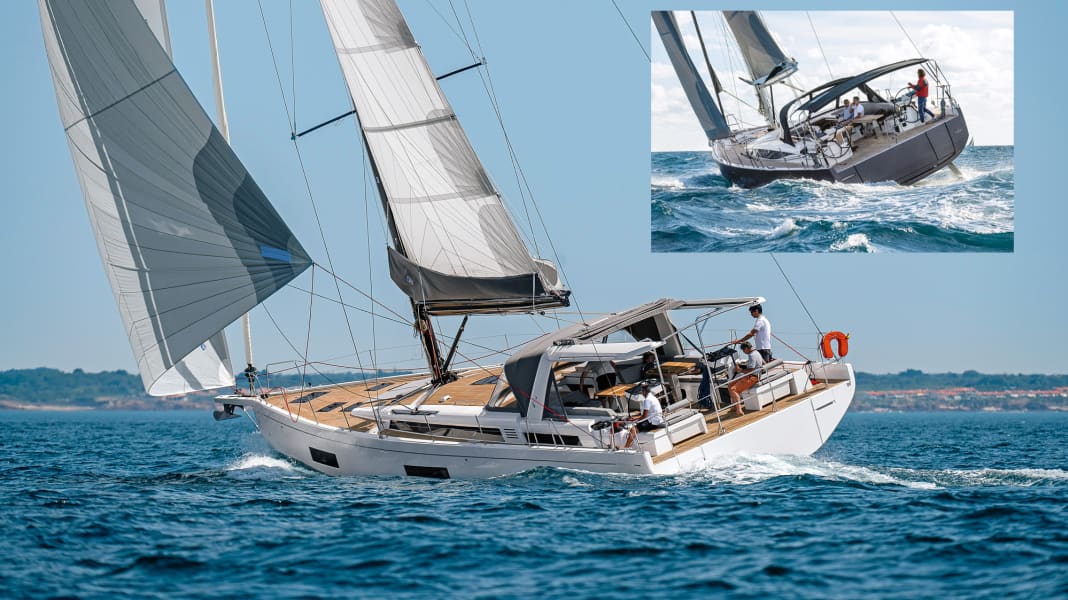
One of the many fascinating things about large yachts is that they have enough space and room to realise good ideas and unusual wishes that cannot be implemented on smaller boats. While the designers of compact boats usually fight for every centimetre to achieve the best compromises, the planners of large yachts have an easier time realising their ideas with a free hand. Two new large yachts from French series production, whose concepts could hardly be more heterogeneous, show just how broad the spectrum of possibilities in the XXL segment can be. And this despite the fact that both boats come from the same extended family, the mighty Beneteau Group. The shared DNA adds extra flavour to the comparison.
Oceanis Yacht 60 in pictures
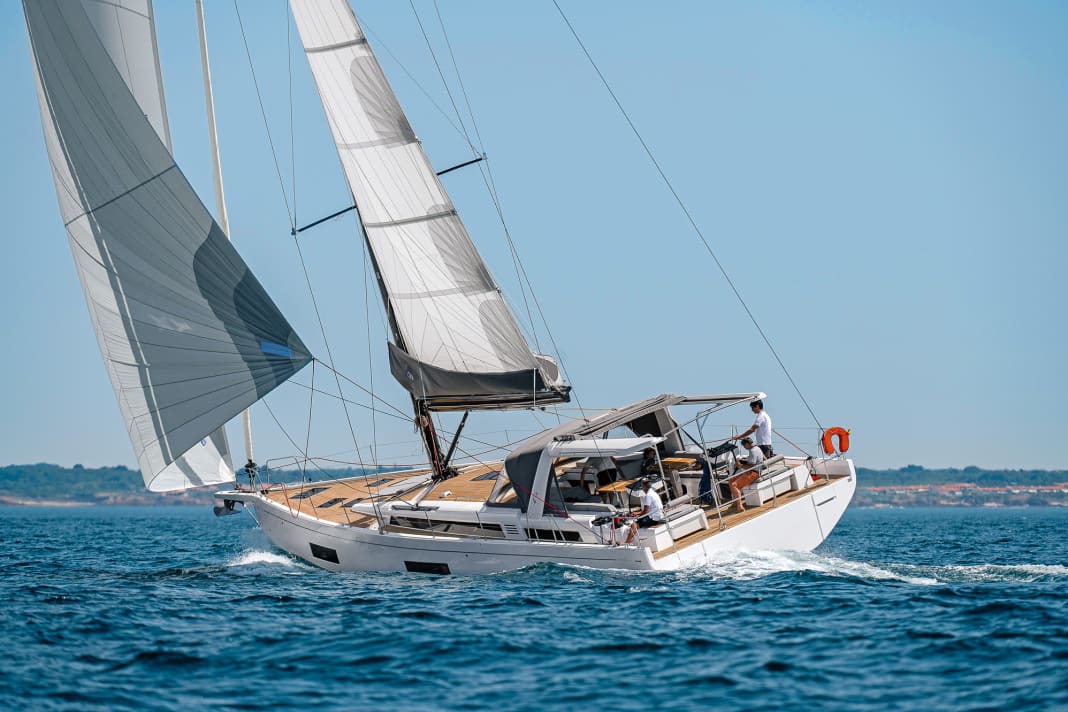





The Oceanis Yacht 60 from market leader Beneteau is brand new on the market. The plans originate from the collaboration between designer Roberto Biscontini and designer Lorenzo Argento. The wide stern with the flat frame and the wide waterline are typical of their style. The team from Italy has already designed the larger boats in Beneteau's new, sporty First series, such as the First 44.
In addition, the First 53 (YACHT 23/2019), whose fast hull was also used as the basis for the design of the Oceanis Yacht 54 (YACHT 23/2020). This almost inevitably raises the question of whether Beneteau will also use the modern, almost radical-looking hull of the Oceanis Yacht 60 as the basis for a new 60-footer for the First programme. In view of Beneteau's previous strategy for line construction, this would be logical. This question remains unanswered by the shipyard.
Jeanneau Yachts 60 in pictures
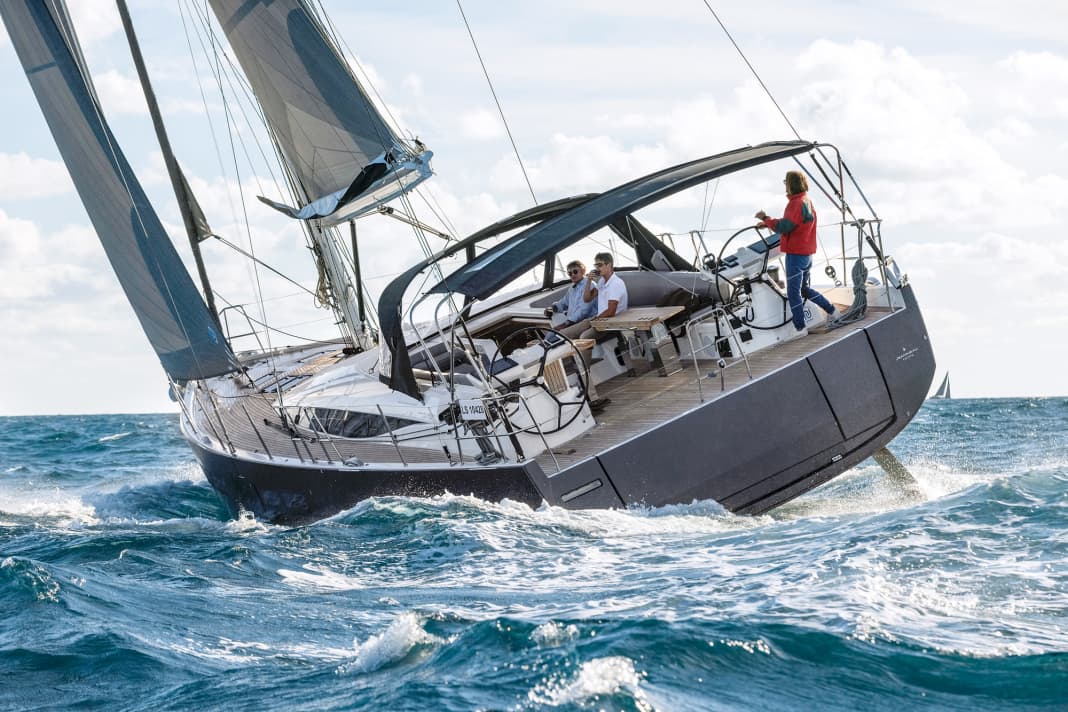





Meanwhile, the Jeanneau counterpart is somewhat more moderate. The design comes from Philippe Briand in collaboration with stylist Andrew Winch. The duo is responsible for all four of the current yachts in Jeanneau's upmarket yacht programme. The hull is more consistently trimmed for volume than that of the Oceanis, which is particularly evident aft. Although the pronounced chines are now somewhat out of fashion, they create a considerable amount of extra space in the aft section, which Jeanneau utilises for an unusual layout below deck with a large, full-length owner's cabin.
The similarities
Both yachts are equipped with double rudder blades, an L-shaped cast iron keel and two draught variants. The rigs are also almost identical. As standard, both yachts are fitted with a two-saling furling mast from Sparcraft and a self-tacking jib. A simple set of Dacron upwind sails is included in the scope of delivery. Both manufacturers also offer their boats with a conventional sail plan as an option, i.e. with a pinhead mainsail and a short overlapping genoa with adjustable hove-to points. In this case, the masts are around 1.50 metres higher.
These performance upgrades are sensibly accompanied by better laminate sails. The shipyards have put together corresponding equipment packages for their sports rigs, including hydraulic backstay tensioners and running rigging made of Dyneema. Both test boats were equipped with these.
However, the test drives took place at different times and locations. A direct comparison of the sailing characteristics and performance potential is therefore not possible. However, the wind conditions during the tests were similar, at least in parts, so that a comparative categorisation of the performance data is at least possible with reservations. The equipment of the test boats and their sails also allow a comparison.
Oceanis Yacht 60 under sail
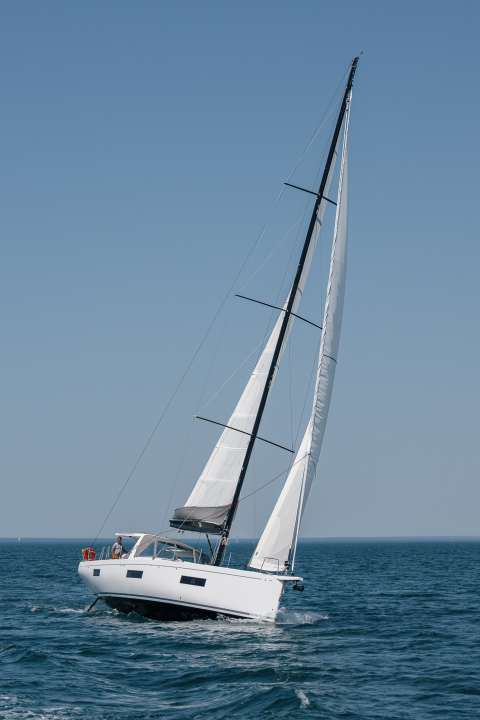
The Oceanis Yacht 60 performs surprisingly well in the test and is a step ahead in both light and strong winds. In addition, the Beneteau can run at a very good height. In only ten knots of wind, the boat reaches 7.0 knots upwind and tacks over an angle of only 80 degrees. At half wind with Code Zero furled, the log also shows double-digit values at wind force three.
Jeanneau Yachts 60 under sail
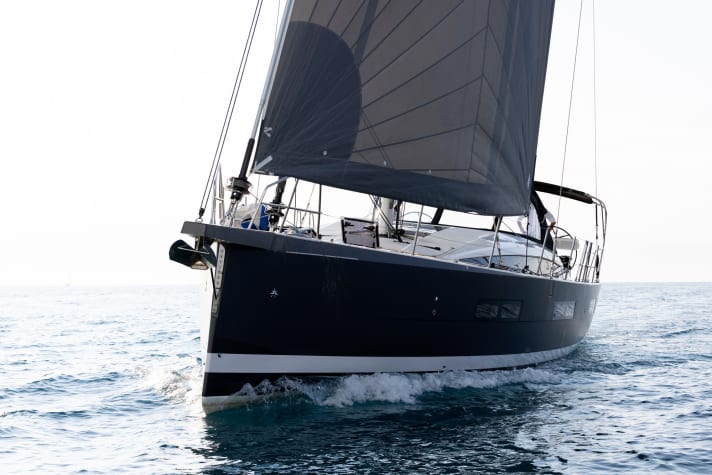
The Jeanneau Yachts 60 also sails strongly, but does not quite match the performance data of its antagonist in an indirect comparison. She seems to be travelling a little slower and cannot quite match the good height of the Oceanis. The turning angles are around 90 degrees.
The cockpits of both yachts
Both the Jeanneau and the Beneteau feature the so-called walkaround layout in the cockpit. The innovative arrangement is now being implemented by the two brands for all new developments in the larger length segments. And they have this as a unique selling point compared to the competition - because it is protected by patents. Walkaround means that the side decks slope backwards to the height of the cockpit floor. This enables barrier-free access from the cockpit to the foredeck.
On the Jeanneau, the difference in level is designed as a moderately sloping ramp, with the upper and lower shrouds separated further forward, which allows easier passage to the bow overall.
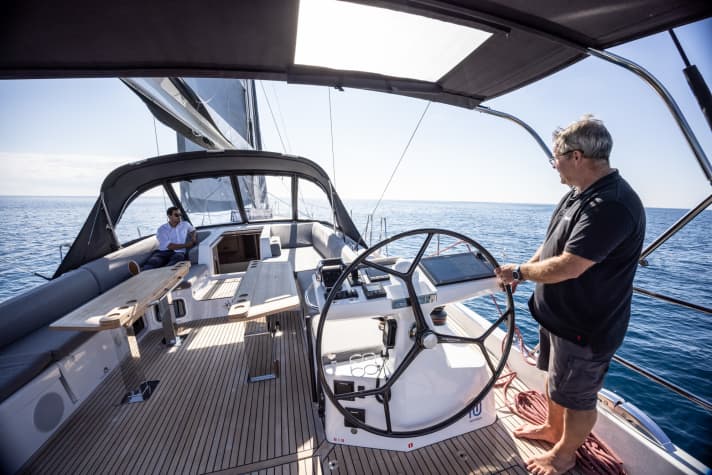
Instead of a ramp, Oceanis installs two steps in the running deck, and the lower shroud braced from the mast to the outside of the hull obstructs the passage.
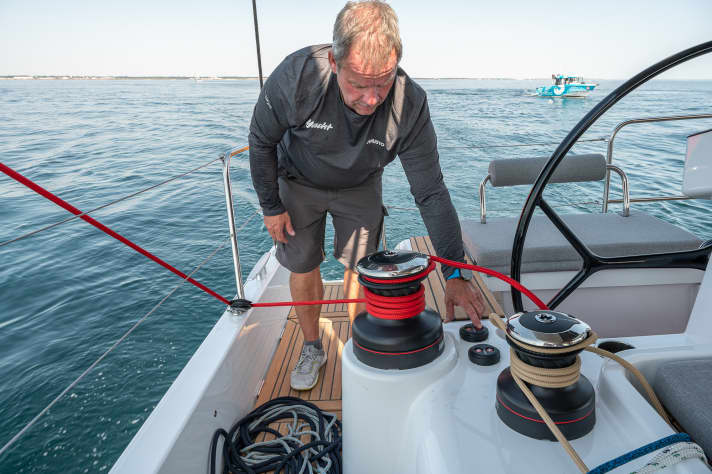
The walkaround cockpit generally offers many advantages when handling manoeuvres, as you can stand on the recessed running deck at the side in a kind of channel and operate the winches from there at a good height. On both boats, all sheets, halyards and trim lines except for the two large winches are led back directly in front of the two helm stations, which can also be easily reached by the helmsman. As there are no seats for the helmsman on the aft deck of the Jeanneau as standard, he can walk around the steering columns unhindered and also work on the winches from the outside, both upwind and downwind. However, he has to stand permanently, which can be tedious in the long run.
On the Oceanis, on the other hand, the skipper can sit sideways on the extended cockpit coamings, but has less freedom of movement there, especially for pulling through the sheets and operating the winches.
The mainsheet operation
The tarp bracket is already part of the basic equipment on the Oceanis from the shipyard. The very robust GRP part takes the mainsheet guide out of the cockpit and also serves as a frame for a powerful sprayhood. On the Jeanneau, the mainsheet is run from the shipyard via a sheet triangle in front of the companionway. This also works, but the pull is very far forward on the main boom, which significantly reduces efficiency. This means you have to use more force to hoist the mainsail tightly. The Jeanneau is also available with a targa bracket, but only as an option. And a fixed bimini with convertible roof is on the list of extras for both boats.
Dinghy in the stern
The shipyards install closed storage compartments for a dinghy in the stern. On both the Jeanneau and the Beneteau, 2.90 metre long inflatable boats fit into the garages in the direction of travel without having to be deflated. The large bathing hatches ensure easy handling when hauling up and launching. This can also be done electrically on request.
The interior of the Jeanneau Yachts 60
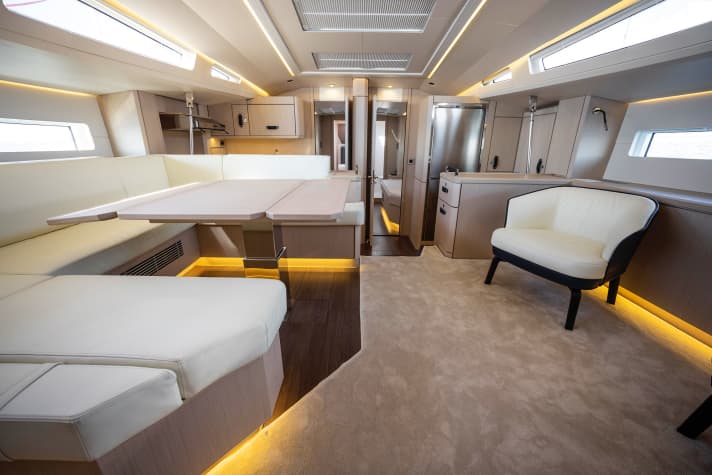
On the Jeanneau, the garage is offset to the side, which is special, but for a good reason. As a novelty, the French have installed a spacious owner's area aft with a large double bed and en-suite bathroom across the entire width of the ship as standard. This special arrangement is only possible with an asymmetrical layout. The layout at the front of the Jeanneau is also special. Because the main bulkhead is relatively far aft, there is plenty of room for customisation. For example, two centre cabins are possible, which can be spatially separated with an extendable longitudinal bulkhead and the berths can be widened accordingly. Alternatively, the shipyard can also install a second owner's cabin with a large double bed.
Depending on how this front living area is fitted out, there is space in front for one very large or two smaller toilet rooms. There are also variations for the forepeak, which can be configured as an additional double cabin, as a sailing cabin with workshop or as a cabin for the skipper with his own toilet. Combining all the options for the fore and aft deck, Jeanneau gives the customer a choice of no fewer than 19 different layout options.
The interior of the Oceanis Yacht 60
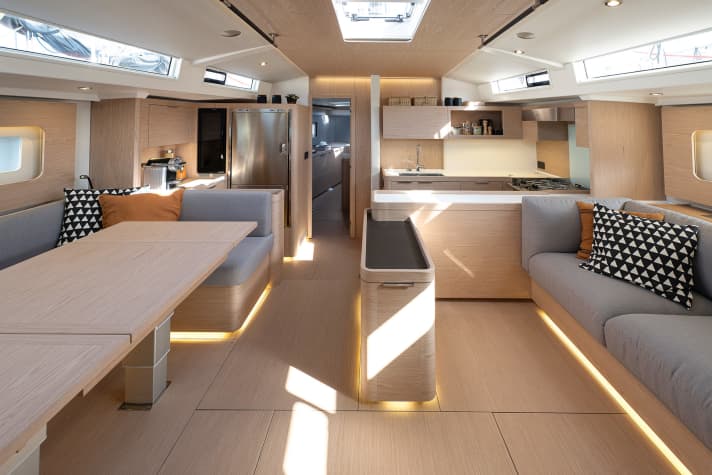
For the Oceanis Yacht 60, on the other hand, the variance for the interior remains extremely modest. The standard layout is with two double cabins aft, each with its own en-suite bathroom, and the very spacious owner's cabin with bathroom and shower forward. However, no alternatives are provided. Buyers only have a choice for the significantly smaller forepeak compared to the Jeanneau, which can be converted into a sailing cabin or a cabin for a skipper with modest comfort requirements.
Beneteau has come up with a special feature for the owner's cabin in the foredeck. The double bed is offset to the side and almost completely free-standing with the option of walking around it, almost like at home in the bedroom. This makes getting into bed much easier. The queen-size bed (1.60 metres wide) is framed on one side by an entire row of storage space in the style of a sideboard with drawers. This is also very special, but offers many advantages and, above all, plenty of space for clothes and other personal items. The owner's area in the foredeck with its huge bathroom and separate shower, where two people can stay at the same time without getting in each other's way, is particularly impressive.
The Pantrys
On both yachts, the galley in front of the saloon is built directly against the main bulkhead across the entire width. The size of the galleys is comparable, as is the number of storage spaces and their usability. On the Jeanneau, however, there are few really usable work surfaces. On the Oceanis, on the other hand, this is better organised. There are plenty of surfaces for preparing and cooking as well as other storage areas.
The prices
The boats from Jeanneau and Beneteau cost just over one million euros ex shipyard, including VAT. This makes the Beneteau offerings comparable, but clearly more expensive than the possible competitor yachts from Bavaria, Dufour or Hanseyachts, some of which are significantly smaller. A direct comparison is therefore not possible.
The Hallberg-Rassy 57, which is comparable in size but more than twice as expensive, is also listed in the competition overview below.
Jeanneau and Beneteau belong to the same corporate conglomerate, can utilise synergies and share global market leadership at a distance from the competition. At the same time, the shipyards want to operate independently and develop their products with recognised brand values. This is a good thing, as competition is known to stimulate business.
Video of the Jeanneau Yachts 60
Jeanneau Yachts 60 in detail
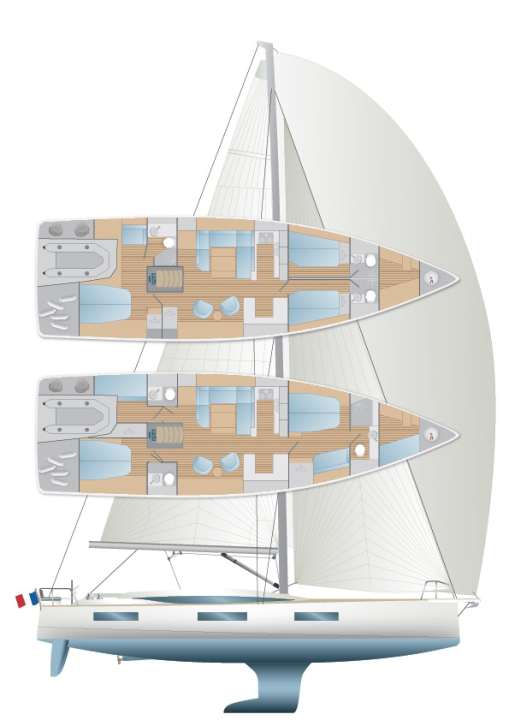
Valuation
Blue water cruiser for the discerning. Plenty of volume and a wide range of customisation options. Hull, deck and interior are well and solidly built
Design and concept
- + Innovative overall concept
- + Numerous variants
- - Very small baking boxes
Sailing performance and trim
- + Solid performance on the wind
- + One-handed suitability
- - High loads on the mainsheet
Living and finishing quality
- + Huge aft owner's cabin
- + Noble fit-out standard
- - Small work surfaces in pantry
Equipment and technology
- + High-quality deck equipment
- + Fixed bimini on request
- - Machine difficult to access
Technical data
- CE design category A
- Hull length 17.41 m
- Total length 18.21 m
- Waterline length 16.82 m
- Width 5.20 m
- Draught/alternative 2.70/2.25 m
- Mast height above WL 25.20 m
- Theoretical hull speed 9.9 knots
- Weight 20.1 tonnes
- Ballast/proportion 5.0 t/25 %
- Mainsail (furling mast) 71.0 m²
- Self-tacking jib 57.0 m²
- Engine (Yanmar) 110 kW/150 hp
- Fuel tank 318 litres
- Fresh water tanks 2x 380 litres
- Holding tank 3x 64 litres
Hull and deck construction
- GRP sandwich constructions built using the vacuum infusion process with foam core and polyester resin. Full laminate in the keel area. Continuous inner shells are glued in. Cast iron keel
Rig and sail
- The Sparcraft furling mast with two spreaders and Dyform shrouds is standard, as is the self-tacking jib. The rig is on deck and the sails are included in the basic price. The slightly higher sports rig with classic mainsail and overlapping genoa is available as an option
Motorisation
- Yanmar built-in diesel with 150 hp output (110 kW) and shaft drive. Ex works equipped with three-blade fixed pitch propeller. Bow thruster included in the basic price
Equipment and prices
- Base price ex shipyard € 1,002,930
- Price ready to sail² € 1,026,300
- Comfort price² € 1,099,620
- Warranty/against osmosis 2/5 years
Shipyard
- Chantiers Jeanneau,
- 85505 Les Herbiers (FRA)
- www.jeanneau.com
- Sales Dealer network
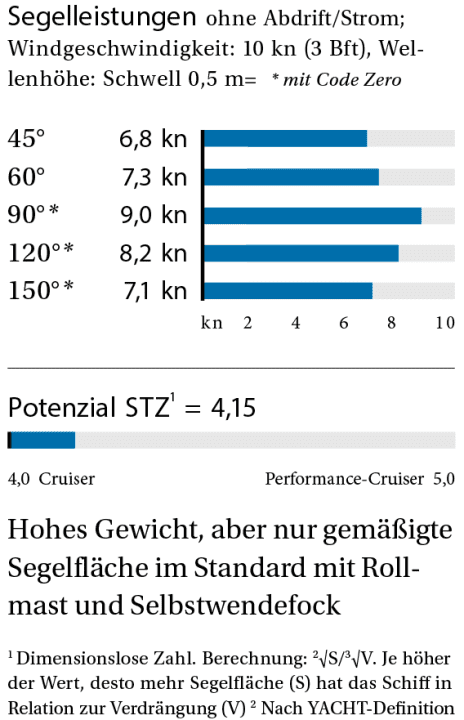
Oceanis Yacht 60 in detail
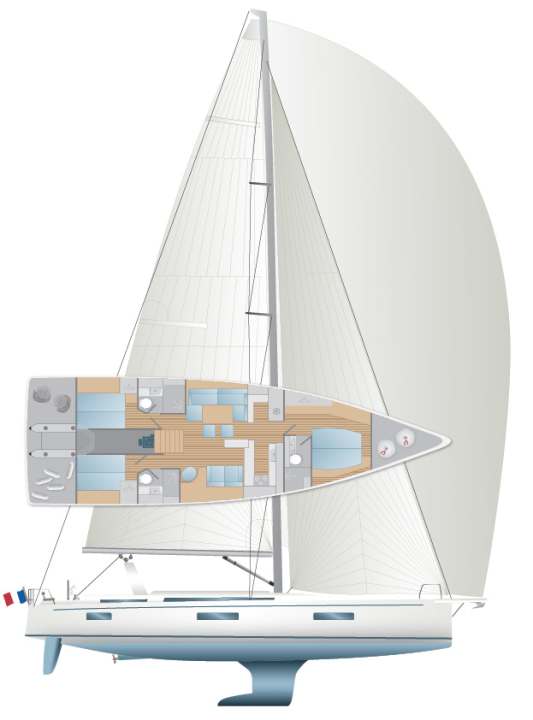
Valuation
Attractive and powerful cruising boat with blue water ambitions. However, the concept shows little versatility for the interior below deck. Attractive, bright and high-quality interior
Design and concept
- Modern, fast hull
- Attractive look
- Hardly any expansion options
Sailing performance and trim
- Very high performance potential
- Good height in the wind
- Trimming somewhat awkward
Living and finishing quality
- Cosy forward cabin
- Bright, airy living ambience
- Few holding options
Equipment and technology
- Standard tare bar
- On-board technology perfectly accessible
- Good ventilation options
Technical data
- CE design category A
- Hull length 17.60 m
- Total length 18.95 m
- Waterline length 17.00 m
- Width 5.30 m
- Draught/alternative 2.55/2.10 m
- Mast height above WL 24.44 m
- Theoretical hull speed 10.0 knots
- Weight 21.7 tonnes
- Ballast/proportion 5.01 t/23 %
- Mainsail (furling mast) 77.0 m²
- Self-tacking jib 62.0 m²
- Engine (Yanmar) 110 kW/150 hp
- Fuel tanks 2x 250 litres
- Fresh water tanks 4x 200 litres
- Holding tanks 3x 67 litres
Hull and deck construction
- Full laminate hull, built with resin infusion (polyester). Deck GRP sandwich construction with foam core made of recycled PET, built using the vacuum infusion process. Continuous inner shells, cast iron keel
Rig and sail
- 2-saling furling mast with 1x19 shrouds from Sparcraft with self-tacking jib ex shipyard. Performance mast option made of black anodised aluminium with three spreaders, classic mainsail, overlapping genoa and hydraulic backstay
Motorisation
- Common rail built-in diesel from Yanmar with 150 hp output (110 kW) and shaft drive. Three-blade folding propeller as standard, plus bow thruster (24 V)
Equipment and prices
- Base price ex shipyard € 1,065,050
- Price ready to sail² € 1,096,320
- Comfort price² € 1,160,455
- Warranty/against osmosis 2/2 years
Shipyard
- Chantiers Beneteau, 85850
- Saint-Gilles-Croix-de-Vie (FRA)
- www.beneteau.com
- Sales Dealer network
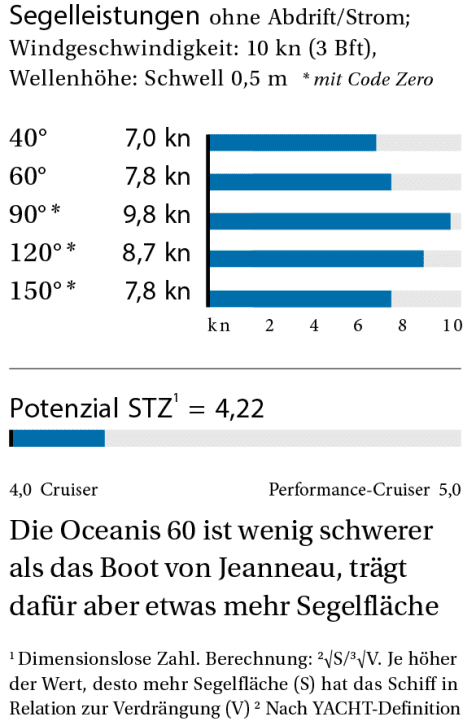
A small but fine selection. There are only a few production boats of a similar size
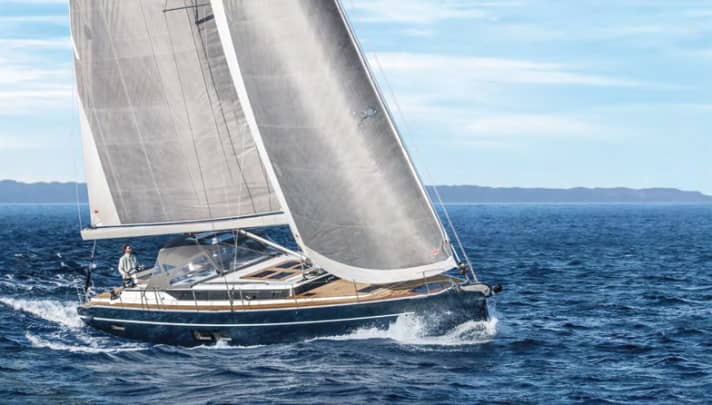
Bavaria C57
Bavaria Yachtbau's flagship is slightly smaller and lighter than the competition. Comes as a three- or four-cabin model, each with a wet cell. Large storage space for the dinghy in the stern.Hull length 16.16 m; width 5.28 m; weight 18.1 tonnes; from 582,505 euros
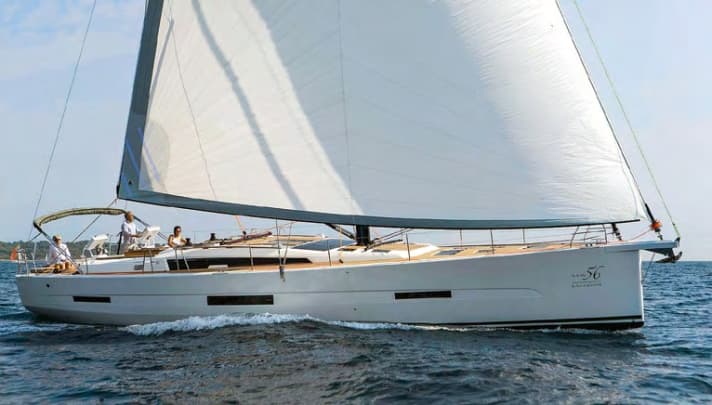
Dufour 56
The versatile Frenchwoman offers expansion options from three to five double cabins. A cabin for the skipper in the foredeck is also possible. Spacious sun loungers on deck.Hull length 16.30 m; width 5.05 m; weight 17.6 tonnes; from 626,900 euros
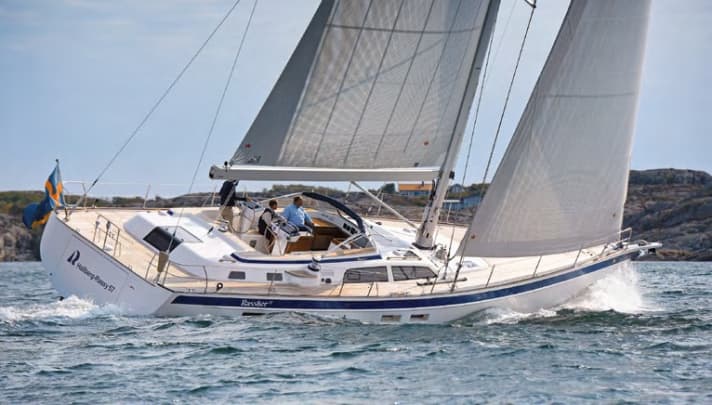
Hallberg-Rassy 57
Exclusive blue water yacht from Sweden for a long, carefree journey. The ship shines with excellent sailing characteristics and a high performance potential. High price.Hull length 17.44 m; width 5.15 m; weight 28.0 tonnes; from 2.37 million euros
YACHT test: Issue 20/2018
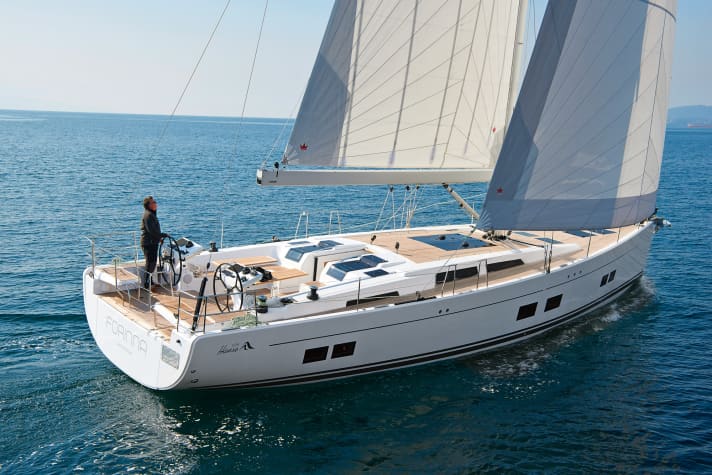
Hanse 588
Attractive yacht with a wide range of layout and equipment options. The boat sailed very well in the test and is easy to handle. Bright, open and modern interior.Hull length 16.70 m; width 5.20 m; weight 22.8 tonnes; from 719,830 euros
YACHT test: Issue 1/2017

